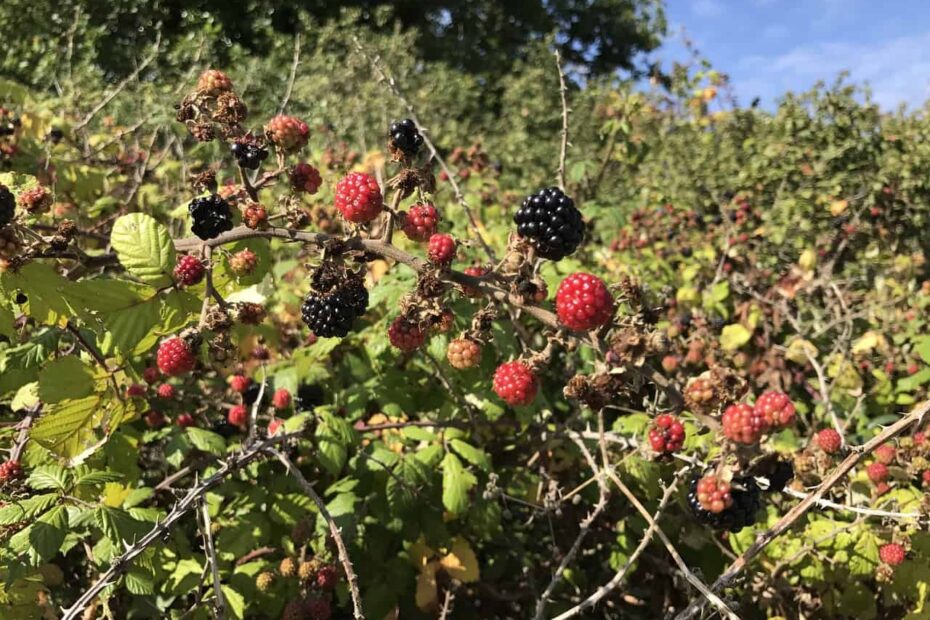[ad_1]
Before we step foot into the outdoors and expect to start blindly sampling any colorful fruit and berry we spot, we need to first know how to forage safely and responsibly.
Many wild foods are potentially deadly in their toxicity, so a safe and methodical approach is an absolute must.
In the near future, we’ll present you with guides on edible plants, fruits, and roots, but for now we’re going to examine the basic rules and guidelines for wild foraging.
Disclaimer
If there’s a number one foraging rule it is “Don’t Eat What You Don’t Know”.
EATING WILD FOODS YOU CAN’T POSITIVELY IDENTIFY IS A DANGEROUS AND OFTEN FATAL MISTAKE. DON’T EAT WHAT YOU DON’T KNOW!
That’s the obligatory warning out of the way, now lets dive into some basic foraging tips.
Know the Land
Familiarize yourself with the local environment to become skilled at spotting not only edible plants, but their likely growing companions.
This wider knowledge has other benefits. Familiarity with animals and insects can significantly alter your experience in the field.
When you one day realize that you didn’t see a bird plucking fruit, instead it was a brown thrasher, you’re a part of the environment and not just somebody passing through it.
Local Wildlife
One of my hobbies in the field is to venture into the forest, take a seat on a sun-warmed boulder, and wait for the wildlife to creep back into activity. It isn’t simply entertaining, but it’s also a sure-fire way of finding out where food crops are located.
The Trees
Most wild foods that we find edible are growing in areas that receive full sun. On top of that, the trees that grow nearby are strong indicators of what to expect.
For example, wild berries tend to favor slightly acidic tracts of land, so look for conifers like pine and spruce to locate a nice section of tasty fruit. Wild apple trees produce edible but gritty fruit on the edges of forest boundaries.
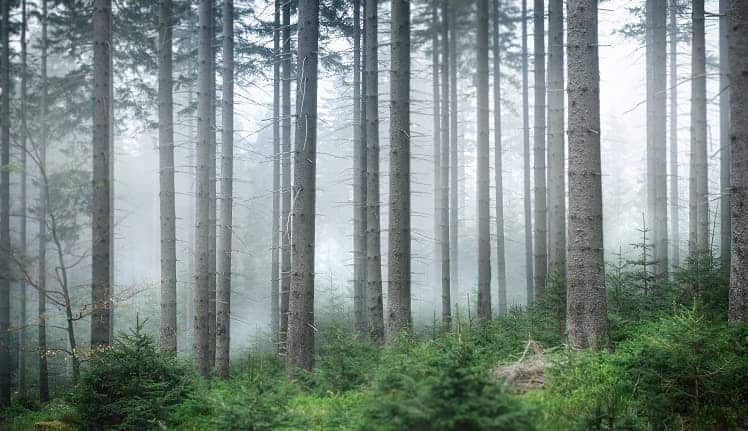
Low-growing crops of blueberries tend to grow on ridge tops and weather-beaten corners of the forest; gain familiarity with juniper and cypress trees to spot the areas where wild and low-growing blueberries produce prolifically.
Know Your Borders
Don’t forage on private or protected property. Ask permission before wandering around an unknown property. If you don’t know who owns the place, find out.
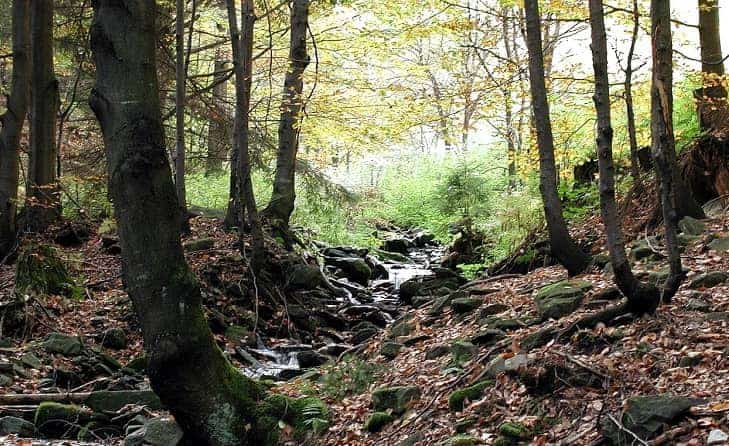
I’ve known folks who feel entitled to their “right” to trespass on private property. Always ask before you step foot somewhere you aren’t supposed to be.
It’s Hazardous Out There!
Every trip into the forest and the wild is potentially dangerous. Some people swear that full boots are the best method for traveling through the forest. I’ve worn hiking shoes my entire life and swear by them. A good pair offers protection, mobility, and flexibility.
A good hat is handy to keep the sun off your head and neck and bring some water to drink. First-aid kits are excellent resources to bring with you almost anywhere. I usually carry all of my belongings inside a backpack with a built-in hydration bladder.
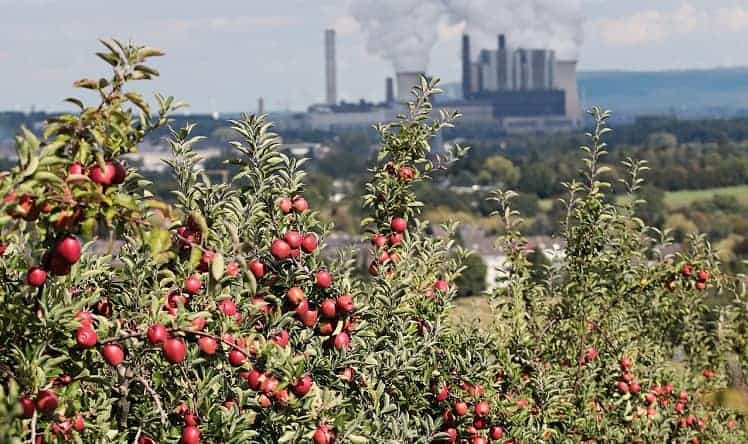
Unfortunately, we exist in a world with dense pockets of pollution. Never ingest anything treated with a pesticide, insecticide, or other noxious chemical, or one that is growing out of a pile of refuse.
Watch Out for Competition
Bears are at the top of the list of potentially dangerous predators, at least when it comes to foraging. They’re after the same foods we are.
The best way to keep a bear from ruining your day is to make a lot of noise while you’re in the field to let those bruins know where you are. They’re shy creatures by default and avoid most interactions.
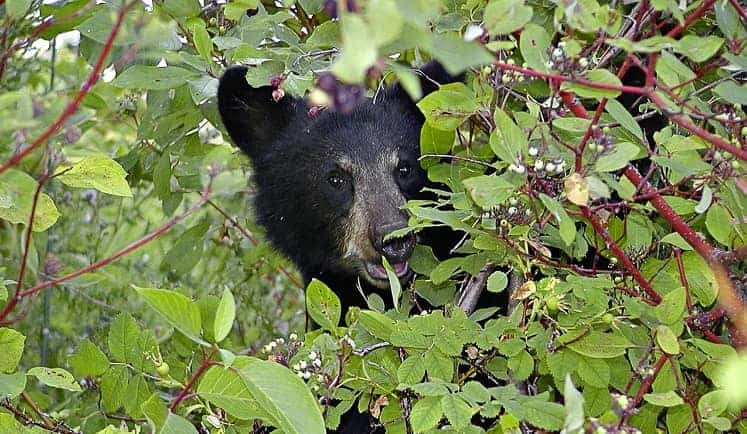
Some foods like mushrooms and root tubers grow low to the ground. Poisonous and venomous creatures tend to skitter around that low level of the forest, so be very cautious and aware of where you’re grabbing.
Our Snack is Their Main Course
The wildlife out there in the field always gets first dibs. Unless the SHTF, we’re foraging for fun and practice, but wildlife depends on these food sources to survive.
Never pick a source of fruit to exhaustion, and don’t return to the same places often.
Exhausting these sources of food is detrimental to wildlife, the future condition of the plant you’re harvesting and potentially paints a target on your back if you’re passing through the same area too regularly.
Don’t be afraid to scatter fruits and seeds around you as you travel. It’s an effective way of spreading an edible food source to new territory. Opportunistic birds and animals will take advantage of it too.
Eating Carefully
Some foods, like mushrooms, are best to ignore unless you’re learning in person from an expert. There are way too many copycat mushrooms, and a single mistake can prove deadly.
Read about identifying turkey tail mushrooms.
Plants are notorious for being difficult to distinguish between.
When eating something wild, use these steps to do it safely and smartly.
- Rub the plant on your arm) and wait a few minutes. If there’s any sort of irritation (itching, red rash, raised bumps, etc), the plant is probably toxic.
- If the plant passes the first test, dab a bit of the edible portions on your lips. If this causes burning, tingling, or an otherwise uncomfortable sensation, stop where you’re at; the plant is probably toxic, and if not, why risk it?
- If you’re not affected by this contact with the plant, you can eat a small piece of the plant or fruit. Wait for fifteen minutes or more. If this third test also passes, the plant is likely non-toxic, but still practice the greatest caution while eating and pay alert attention to your body.
Recommended Reading: How to Tell if a Wild Plant is Safe to Eat
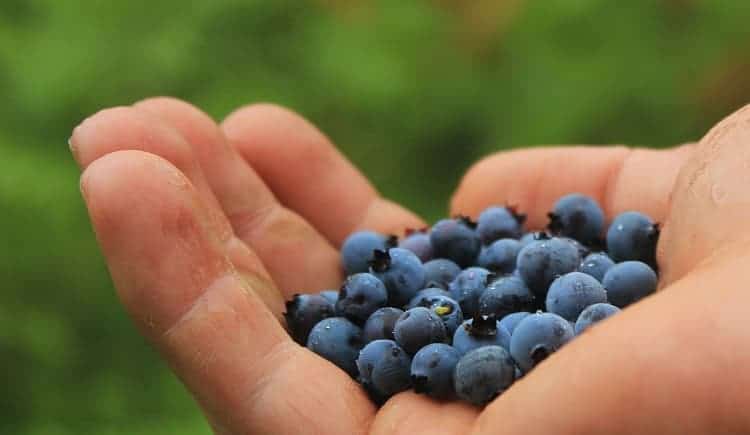
Gathering Tools
At a bare minimum, a sharp knife or harvesting shears are ideal, paired with a spacious basket or similar container to carry your foraged harvest in.
I favor a sharp knife; the Gerb E-Z Out Jr has served me well for five years running and I expect it to continue its excellent performance.
Cleaning the blade is as simple as a quick and rough wipe on my pant leg before I get back to work.
As far as containers go, it’s up to the individual. Some people prefer the traditional basket, while others want to carry their harvested fruits and vegetables in a more secure manner.
In the end, whatever gets you a secure and transportable harvest will get the job done.
Suggested Reading
There are a few excellent books I can recommend. Some of these are regionally focused.
Any Peterson Field Guide is an excellent addition to your bookshelf. I’ve got an old and beat-to-hell copy of this guide to Edible Wild Plants and swear by it.
If you’re interested in mushrooms, again make sure you’ve got a reputable and knowledgeable person who can show you first hand what you’re getting into.
In the meantime, the Audubon Field Guide to Mushrooms is indispensable for learning, researching, and narrowing down identifying traits.
My favorite book on anything natural, The Book of Forest and Thicket provides a fantastic overview of the wild outdoors and presents it in an approachable format.
The author truly cares about the subject material and it comes across in the writing; you’re guaranteed to find something you love in this book.
It’s also damn fine reading when you’ve got a handful of black raspberries to snack on.
Getting Into Gathering
We are tied to the outdoors and nature. We’re a bunch of wild creatures who’re pent up under fluorescent lights, and we need to get back into our natural element.
If you’re in the “I want to be prepared” state of mind, the best way to learn foraging and gathering is to get out there and do it yourself.
There’s sunshine and berries in it for you, so give it a shot.
Tune in next time for our features on edible wild plants.
[ad_2]
Source link
